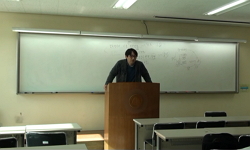국제조약의 틀로 바라본 “UN국제물품매매협약(The United Nations Convention on Contracts for International Sale of Goods, 이하 ‘CISG’)”는 기존의 조약과 다른 점을 발견할 수 있다. 일반적으로 조약은 명...
http://chineseinput.net/에서 pinyin(병음)방식으로 중국어를 변환할 수 있습니다.
변환된 중국어를 복사하여 사용하시면 됩니다.
- 中文 을 입력하시려면 zhongwen을 입력하시고 space를누르시면됩니다.
- 北京 을 입력하시려면 beijing을 입력하시고 space를 누르시면 됩니다.
https://www.riss.kr/link?id=A109692051
-
저자
최성호 (경북대학교 법학전문대학원)
- 발행기관
- 학술지명
- 권호사항
-
발행연도
2024
-
작성언어
Korean
-
주제어
조약법협약 ; 신의칙 ; 통상적 의미 ; 물품매매협약 ; 문맥해석 ; 사법조약 ; VCLT ; Law of treaties ; good faith ; plain meaning ; CISG ; contextual interpretation ; Treaty for private matters
-
등재정보
KCI등재
-
자료형태
학술저널
-
수록면
305-326(22쪽)
- DOI식별코드
- 제공처
-
0
상세조회 -
0
다운로드
부가정보
국문 초록 (Abstract)
조약해석은 어떤 의미에서는 예술이지 정확성을 요하는 과학이 아니다(....the interpretation of document is to some extent an art, not an exact science). 이것은 조약해석이 명확성을 지향해야 하지만 현실적으로 쉬운 일이 아님으로 읽혀진다. 그러나 국제사회는 조약해석을 위해 1969년 “조약법에 관한 비엔나협약(1969 Vienna Convention on the Law of Treaties, 이하 ‘조약법협약’)”을 성안해서 그 기준을 만들고자 노력해 오고 있다. 조약법협약은 조약해석의 국제관습법 영역의 법전화과정을 거쳐 국제사회에 조약해석의 기본원칙을 제공한다. 조약해석은 다양한 법률개념을 포함하고 있는 조약 문언들의 이해와 적용을 목적으로 하는 행위라 한다면 조약 내에 문언화 되어있는 법률개념을 기초로 이루어져야 하며, CISG 해석방법 역시도 조약문언의 해석에서 출발을 하여야 한다.
사법조약으로 CISG를 특정함으로 과연 조약법협약의 해석원칙이 CISG에 적용가능 할 것인가? 또 이미 CISG에 내재한 해석원칙인 제7조로 충분해서 조약법협약의 도움이 필요하지 않은 것일까? 그리고 조약법협약의 해석원칙과 CISG 제7조의 해석원칙과의 차이점과 동일한 점은 무엇인가? 앞으로 새롭게 성안될 사법조약들은 개별조약 내에 해석원칙을 내재하는 것이 최선의 방법일 것인가? 등 CISG가 가지는 조약 특성으로 인해 조약법협약과 CISG 해석규정에 대한 다면적 비교분석이 요구된다. 먼저 조약법협약이 가지는 한계, 즉 국가 간의 합의를 통해 국가의 권리・의무를 규정하는 조약에 대한 해석을 예정하여 만든 도구를 사법조약에 직접적으로 적용하는 것에 대한 문제를 제시하고, 동시에 조약법협약의 해석원칙에 대한 이해를 기초로, 사법조약의 해석규정의 제안을 위해서 조약법협약의 해석규정을 선택적으로 사용할 것이다. 이를 위해 CISG 자체에 내재한 해석원칙과 조약법협약의 해석규정의 이질적인 부분에 대한 분석을 통해서 그 장단점을 비교하여 현시점에 CISG와 같은 사법조약의 해석에 적용할 수 있는 해석규칙을 제안하고자 한다.
국제조약의 틀로 바라본 “UN국제물품매매협약(The United Nations Convention on Contracts for International Sale of Goods, 이하 ‘CISG’)”는 기존의 조약과 다른 점을 발견할 수 있다. 일반적으로 조약은 명칭불문하고 서면형식으로 국가 간에 체결되며 또한 국제법에 의해 규율되는 국제적 합의를 의미한다. CISG의 내용을 보면, 제1편-제3편에서는 국가의 권리・의무가 아니라 계약당사자의 권리・의무를 다루며, 반면에 제4편의 최종규정은 체약국 상호간의 권리・의무를 다루고 있어, 성격이 상이한 부분들이 혼재하고 있음을 알 수 있다. 따라서 조약 원래의 성격에 더해서 CISG는 사적 영역을 다루는 부분을 포함하고 있어, 이를 `사적 영역을 다루는 조약'(Treaty for private matters, 이하 ‘사법조약’)으로 특징지을 수 있다.
조약해석은 어떤 의미에서는 예술이지 정확성을 요하는 과학이 아니다(....the interpretation of document is to some extent an art, not an exact science). 이것은 조약해석이 명확성을 지향해야 하지만 현실적으로 쉬운 일이 아님으로 읽혀진다. 그러나 국제사회는 조약해석을 위해 1969년 “조약법에 관한 비엔나협약(1969 Vienna Convention on the Law of Treaties, 이하 ‘조약법협약’)”을 성안해서 그 기준을 만들고자 노력해 오고 있다. 조약법협약은 조약해석의 국제관습법 영역의 법전화과정을 거쳐 국제사회에 조약해석의 기본원칙을 제공한다. 조약해석은 다양한 법률개념을 포함하고 있는 조약 문언들의 이해와 적용을 목적으로 하는 행위라 한다면 조약 내에 문언화 되어있는 법률개념을 기초로 이루어져야 하며, CISG 해석방법 역시도 조약문언의 해석에서 출발을 하여야 한다.
사법조약으로 CISG를 특정함으로 과연 조약법협약의 해석원칙이 CISG에 적용가능 할 것인가? 또 이미 CISG에 내재한 해석원칙인 제7조로 충분해서 조약법협약의 도움이 필요하지 않은 것일까? 그리고 조약법협약의 해석원칙과 CISG 제7조의 해석원칙과의 차이점과 동일한 점은 무엇인가? 앞으로 새롭게 성안될 사법조약들은 개별조약 내에 해석원칙을 내재하는 것이 최선의 방법일 것인가? 등 CISG가 가지는 조약 특성으로 인해 조약법협약과 CISG 해석규정에 대한 다면적 비교분석이 요구된다. 먼저 조약법협약이 가지는 한계, 즉 국가 간의 합의를 통해 국가의 권리・의무를 규정하는 조약에 대한 해석을 예정하여 만든 도구를 사법조약에 직접적으로 적용하는 것에 대한 문제를 제시하고, 동시에 조약법협약의 해석원칙에 대한 이해를 기초로, 사법조약의 해석규정의 제안을 위해서 조약법협약의 해석규정을 선택적으로 사용할 것이다. 이를 위해 CISG 자체에 내재한 해석원칙과 조약법협약의 해석규정의 이질적인 부분에 대한 분석을 통해서 그 장단점을 비교하여 현시점에 CISG와 같은 사법조약의 해석에 적용할 수 있는 해석규칙을 제안하고자 한다.
다국어 초록 (Multilingual Abstract)
Through a comparison of Articles 31 and 32 of the Convention on the Law of Treaties and Article 7 of the CISG, this article analyzes the differences between the two and proposes a rule for the interpretation of treaties for the private matters by selectively adopting the principles of interpretation of the Convention on the Law of Treaties with the basic content of Article 7 of the CISG.
For rules of interpretation for treaties for the private matters, First of all, the interpretive rules of Article 7 of the CISG are well-developed rules in their own right, regardless of whether they apply to treaty law conventions, and future drafters of treaties for the private matters should start with the interpretive rules of Article 7 of the CISG. However, it is necessary to specify the systematic principles of interpretation, including the principles of plain meaning and contextual interpretation. This can be done either by incorporating explicit provisions from treaty law conventions or by drafting a new type of treaty and codifying the interpretation and provisions of the treaty for the private matters.
The interpretation of a treaty under the Convention on the Law of Treaties is based on the principle of interpretation in good faith, giving effect to the plain meaning of the words as intended or expected by the parties. Article 31(2) explicitly indi...
The interpretation of a treaty under the Convention on the Law of Treaties is based on the principle of interpretation in good faith, giving effect to the plain meaning of the words as intended or expected by the parties. Article 31(2) explicitly indicates that context is inclusive and provides that a treaty must be viewed as a whole, including its preamble and annexes. The consideration of subsequent practice in paragraph 3 refers to the practice of interpreting and applying treaties and is a well-developed jurisprudence in international law.
Through a comparison of Articles 31 and 32 of the Convention on the Law of Treaties and Article 7 of the CISG, this article analyzes the differences between the two and proposes a rule for the interpretation of treaties for the private matters by selectively adopting the principles of interpretation of the Convention on the Law of Treaties with the basic content of Article 7 of the CISG.
For rules of interpretation for treaties for the private matters, First of all, the interpretive rules of Article 7 of the CISG are well-developed rules in their own right, regardless of whether they apply to treaty law conventions, and future drafters of treaties for the private matters should start with the interpretive rules of Article 7 of the CISG. However, it is necessary to specify the systematic principles of interpretation, including the principles of plain meaning and contextual interpretation. This can be done either by incorporating explicit provisions from treaty law conventions or by drafting a new type of treaty and codifying the interpretation and provisions of the treaty for the private matters.
동일학술지(권/호) 다른 논문
-
- 경북대학교 법학연구원
- 하재홍
- 2024
- KCI등재
-
유럽 AI법에 따른 생체정보의 활용과 보호에 관한 고찰
- 경북대학교 법학연구원
- 이권일
- 2024
- KCI등재
-
- 경북대학교 법학연구원
- 김종철
- 2024
- KCI등재
-
- 경북대학교 법학연구원
- 신봉근
- 2024
- KCI등재





 KCI
KCI





